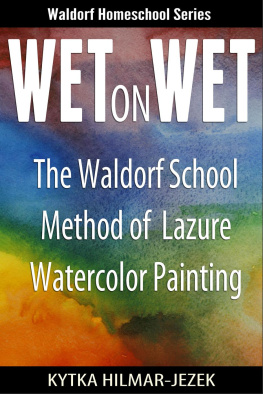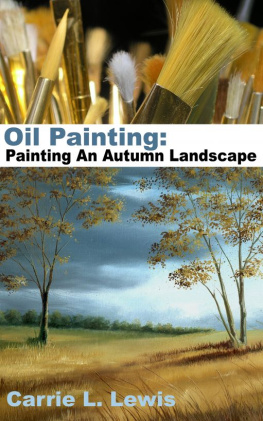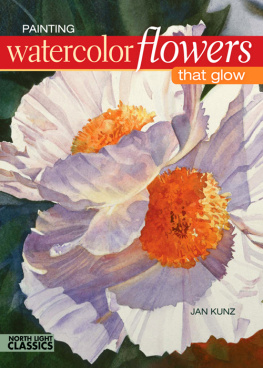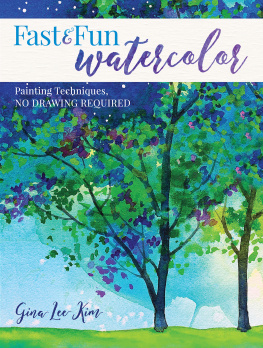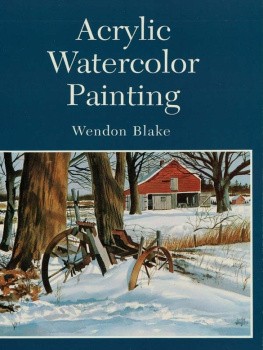Wet on Wet
Waldorf School Style Painting
Compiled By
Waldorf Homeschoolers
Copyright 2002 Waldorf Homeschoolers
All Rights Reserved . No part of this publication may be reproduced in any form or by any means, including scanning, photocopying, or otherwise without prior written permission of the copyright holder except in the case of brief quotations used in critical articles or reviews.
Note to the Reader : This book is intended as an informational guide based on the authors own and personal experience. Any remedies, beliefs, approaches, and techniques described herein are meant to supplement, and not to be a substitute for, professional medical care or treatment. They should not be used for a serious ailment without prior consultation with a qualified healthcare professional.
Fair Use: Some companies believe the use of screenshots is an infringement of copyright on their program, as it is a derivative work of the widgets and other art created for the software. Regardless of copyright, screenshots may still be legally used under the principle of fair use in the U.S. or fair dealing and similar laws in other countries.
Original Source: This work was originally sent on by several different parents and Waldorf School teachers to the Waldorf Homeschoolers site between 1998 and 2002. We would like to give proper credit, but the material sources are no longer in our contact. We remember that some of the content came from Miss Michelle, Miss Katherine, Pamela, Anya, Kytka, Brucey, Cindy and Miss Elaine. We are not sure of the sources of their information therefore, no copyright infringement is intended.
Recommended Reading List
Resources for Paints and Brushes
FREE Bonus Audio
www.WaldorfTalk.com/FreeGifts
Table of Contents
Introduction
He who wants to experience the true being of color must not start from a preconceived idea of what to paint. He must wait and see what develops out of the colors themselves.

Asked why an absolute amateur might want to draw or paint, many people might easily answer:
To express ones feelings.
Expressing Oneself in Colors
I t is more therapeutic to learn to use the whole sheet of paper in a balanced and economic way. The person who wants to experience color must not start from an idea of what to paint. He must see what develops out of the manner and to do what the colors want and not what ones mood demands.
People visiting a Waldorf school or an exhibition of its work, often ask: Why are all the paintings so similar? Why arent the children allowed to paint what they like?
The answer has partly been given above. Naturally, as in all teaching institutions, there might be a danger in one or two cases of slipping into a routine. But it should be stressed that most of what seems so similar in the way teachers approach and solve artistic problems comes about because in Waldorf schools, painting follows a path of exercises dictated not by the individual teacher but quite simply by the nature of color and by the necessity of taking the childrens needs into account.
It is difficult to express in words what it can mean for people later in life if they have an early intense experience of color. We are dealing here with inner riches, which cannot be grasped with physical hands and with qualities and nuances, which are too subtle to be described.
It is quite definite that the whole world is different for someone who has begun to understand the quiet, entirely unintellectual and deeply penetrating language of color.

The Role of Art
T o practice an art, we have to face problems, which approach us from outside in the form of the material to be worked on; colored paints, modeling clay, a movement diagram, a poetic work. We cannot solve the problems unless we enter fully into the material. This process of entering into the material often leads to a whole range of feelings in the soul: expectation, disappointment, anger, resignation, thoughtfulness, surprise, new hope, new efforts of will, intense joy at being creative. But it is not only in the soul that this entering into the material is felt. It goes right into the physical body, into finger tips and toes.
Practicing an art is particularly important in life today. In this technical age, life is full of physical actions which are carried out more or less automatically: switching on the light, turning up the heating, starting the washing machine, taking a seat in the underground, and so on...
Some activities also require alertness and attention. You cant relax for a moment while driving a car, working a crane, or drilling somebodys tooth. But the concentration you need is cool and requires attentiveness, consideration and reflection. Only one or two of your senses and very few of the great range of skills requiring physical dexterity are called on.
An artistic activity places you in quite a different situation. Nothing is based here entirely on routine. Full concentration is certainly necessary but it encompasses a wide range. Learning to drive a car may be very exciting but it cannot lead to such manifold and deep inner experiences nor anything like the experience of pure bodily participation which occurs through modeling a form in clay, practicing a piece of music on an instrument, or creating a part in a play.
In life today, there is an infinite paucity of physical activities, which require the full participation of body and soul.

Children and Art
T he intensive bond between body and soul is one of the characteristic qualities of childhood. Adults are at pains to conceal their feelings and emotions, though they may not always succeed. But children do just the opposite. Instinctively they stamp their feet when they are angry or jump up and down when they are happy, and so on.
By allowing children to express the feelings in their souls through artistic activities, we give free rein to their deepest needs; but not just any free rein. Sometimes the inner involvement of children in creative, artistic activities is looked upon as letting them get something out of their system.
If this were the case, we might just as well let them bang on an empty tin can, run round the house a few times, or go and smash some china in the park. But art is formative, both in the material world and in the world of the soul. Some artistic tasks might require a different inner attitude to the one we instinctively adopt. In this way a cautious child can be persuaded to be more daring, an exuberant child more circumspect, a weak-willed child more persevering, an obstinate child more adaptable, and so on.
The educational effects of artistic activities on children have frequently been observed and stressed. But it is not always realized how far reaching and lasting these effects can prove to be.
The most deeply rooted habits and patterns of behavior are those which form when a child is at the copying stage of his development. Some of these change more or less naturally over the years in accordance with changes in the environment and in attitude to life. But others remain, and these are hidden beneath the threshold of consciousness and cannot be budged.
One of these is a basic positive or negative attitude towards the environment and other people.
Next page
